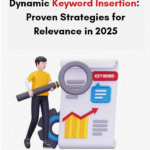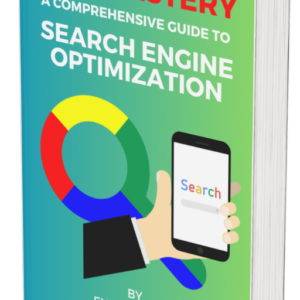The shift from Expanded Text Ads (ETAs) to Responsive Search Ads (RSAs) marks one of the most significant changes in Google Ads over the past decade.
RSAs have become the default format for new search campaigns, using machine learning to test and optimize headline and description combinations for each search query.
In contrast, ETAs—once the standard—offer a fixed creative structure with predictable delivery.
This comparison of Responsive Search Ads vs Expanded Text Ads in 2025 focuses on seven critical insights: policy changes, performance benchmarks, creative flexibility, Quality Score impact, control versus automation, budget efficiency, and best practices.
The goal is to equip advertisers with actionable data and strategies to maximize ROI while adapting to the realities of automated ad serving.
Whether you’re managing a high-budget enterprise account or running campaigns for a local business, these insights will help you make informed decisions about your ad mix.
#1. Current Adoption and Policy Changes
Google officially ended the creation and editing of Expanded Text Ads in June 2022, shifting the platform entirely toward RSAs for new ad creation.
While ETAs that were already in place could continue to run, advertisers quickly noticed a decrease in impression share for them as Google’s ad rotation began prioritizing RSAs.
In the current Responsive Search Ads vs Expanded Text Ads environment, RSAs dominate because they fit neatly into Google’s automation-first roadmap.
They are designed to adapt dynamically to user queries, device types, and other context signals.
According to WordStream, accounts that switched fully to RSAs experienced an average 5–15% lift in CTR within the first 60 days.
However, advertisers in regulated industries such as finance or healthcare still keep ETAs running for compliance reasons.
This allows them to control exactly what text is shown, avoiding potential issues with automatically generated headline combinations.
In most industries, though, the advantage of RSAs in reach and adaptability outweighs the limitations of less control.
#2. Performance Benchmarks in 2025
In terms of measurable results, RSAs have steadily outperformed ETAs for most advertisers.
Data from Search Engine Land shows that in 2025, RSAs average a 6.2% CTR versus 5.4% for ETAs, and enjoy a 7% higher conversion rate overall.
The improved performance comes from RSAs’ ability to display ad combinations that better match the searcher’s intent.
In head-to-head tests of Responsive Search Ads vs Expanded Text Ads, RSAs also tend to achieve slightly lower CPCs due to better Quality Scores.
Since ad relevance is a key Quality Score component, RSAs’ flexibility in serving contextually appropriate copy often leads to cost savings.
That said, ETAs may still outperform RSAs in certain campaigns where messaging precision is critical.
For example, campaigns with strict promotional disclaimers or regulated claims can see better consistency and compliance with ETAs.
For most advertisers, though, the performance edge of RSAs makes them a stronger long-term investment.
#3. Creative Flexibility and Message Testing
The creative capacity of RSAs is a major differentiator in the Responsive Search Ads vs Expanded Text Ads comparison.
While ETAs are limited to three headlines and two descriptions, RSAs allow up to 15 headlines and four descriptions, producing thousands of potential combinations.
This expanded capacity enables broader message testing within a single ad unit.
Advertisers can incorporate multiple offers, CTAs, and keyword variations to appeal to different user segments without creating separate ads for each variation.
Google’s machine learning then identifies which combinations work best for each search scenario.
According to Adalysis, campaigns that fully utilize RSA asset limits see an average of 12% more impressions and 9% more conversions compared to campaigns with fewer variations.
The ability to pin key headlines ensures important brand messages always appear, balancing automation with control.
For advertisers running seasonal or promotional campaigns, RSAs also make it faster to introduce new messaging without building entirely new ads.
#4. Impact on Quality Score and Ad Rank
Quality Score is a pivotal metric in Google Ads, directly affecting Ad Rank and CPC.
In the Responsive Search Ads vs Expanded Text Ads debate, RSAs often have the upper hand because their flexibility allows them to serve ad copy that is more relevant to a broader range of queries.
This relevance boost improves expected CTR, a core component of Quality Score.
Advertisers using RSAs frequently see incremental lifts in Ad Rank without raising bids, allowing for better placement at the same or lower cost.
The improved Ad Rank can also translate into greater impression share, which is critical for competitive keyword markets.
However, poorly structured RSAs—those with generic or irrelevant assets—can harm Quality Score just as easily as they can help it.
For this reason, advertisers should regularly review RSA asset performance reports and replace underperforming headlines or descriptions to maintain relevance and performance.
#5. Control vs Automation
One of the main strategic considerations in Responsive Search Ads vs Expanded Text Ads is the level of creative control.
ETAs give advertisers full control over exactly which headline and description combinations appear in every impression, which is ideal for regulated industries or strict brand guidelines.
RSAs, by contrast, rely on Google’s algorithm to determine the combinations, which can lead to unexpected results if not monitored.
This automation can be a double-edged sword. On the positive side, it enables greater reach and more personalized ad delivery.
On the negative side, it may produce combinations that dilute brand voice or overlook compliance requirements.
The solution is to strategically use pinning, negative keyword lists, and frequent asset reviews to ensure RSAs stay on-message.
Many advertisers adopt a hybrid approach—allowing RSAs to run alongside high-performing ETAs in the same ad group, which lets them benefit from automation while still having a safety net for precise messaging.
#6. Budget Efficiency and ROI
From a budget management perspective, the Responsive Search Ads vs Expanded Text Ads comparison often shows RSAs delivering stronger ROI.
Their flexibility allows for more relevant matches, which typically increases click volume without proportionally increasing CPC.
This is particularly beneficial for accounts using automated bidding strategies like Target CPA or Maximize Conversions.
A 2025 report from Optmyzr found that advertisers allocating at least 80% of their search budget to RSAs achieved an average 13% reduction in cost-per-conversion and a 10% boost in impression share.
This efficiency comes from RSAs’ ability to capture a wider variety of search intents without needing separate ads for each one.
Still, ROI gains depend on well-structured campaigns.
Advertisers should segment ad groups carefully, supply high-quality creative assets, and pair RSAs with robust conversion tracking to ensure performance improvements translate into real business results.
#7. Best Practices Moving Forward
In 2025, the optimal strategy for Responsive Search Ads vs Expanded Text Ads is to focus on RSAs while retaining ETAs in niches where they still outperform.
Best practices include:
#1. Providing all 15 headlines and 4 descriptions for RSAs to maximize machine learning potential.
#2. Using a mix of match types to broaden reach without sacrificing relevance.
#3. Pinning essential brand or compliance messages to maintain control.
#4. Reviewing RSA asset performance monthly and replacing low performers.
#5. Keeping legacy ETAs active in high-value ad groups where they deliver better results.
This approach blends the adaptability of RSAs with the precision of ETAs, giving advertisers both scalability and control.
As Google continues to refine its automation, RSAs will likely expand their lead, but strategic use of both formats ensures no missed opportunities.
Historical Context and Evolution of Both Formats
To understand the current performance of Responsive Search Ads vs Expanded Text Ads, it helps to look at how each format emerged.
Expanded Text Ads launched in 2016 as an upgrade to the old standard text ads, offering more space for advertisers to highlight key selling points.
This change doubled headline capacity and expanded description fields, aligning with mobile-first browsing.
For several years, ETAs dominated search campaigns, giving advertisers predictable control over creative.
Responsive Search Ads debuted in beta in 2018, representing a shift toward automation.
Google positioned RSAs as a way to serve the most relevant ad combination for each query by testing multiple assets in real time.
Initially, many advertisers hesitated to embrace RSAs due to reduced creative certainty.
Over time, performance data and Google’s decision to sunset ETA creation in 2022 accelerated RSA adoption.
Today, the two formats coexist in some accounts, but their origins still influence how advertisers perceive and use them — ETAs for message precision, RSAs for dynamic adaptability.
This historical progression explains why some advertisers are still in a hybrid phase rather than moving entirely to RSAs.
Audience Targeting Implications
The choice between Responsive Search Ads vs Expanded Text Ads also impacts how effectively you reach different audience segments.
Because RSAs generate multiple headline and description combinations, they can match a broader range of search queries, including long-tail terms and variations you might not specifically target with ETAs.
This makes them well-suited for accounts using broad match keywords or campaigns where audience diversity is high.
ETAs, with their fixed copy, work best when you have a highly specific audience and want to maintain a consistent message for every impression.
In some cases, advertisers run ETAs to target niche segments with a uniform value proposition while allowing RSAs to handle broader, less defined audiences.
RSAs’ adaptability can also uncover audience insights you wouldn’t identify with ETAs alone.
Asset performance reports often reveal which messages resonate with certain demographics or regions, informing not just ad copy but also landing page and overall campaign strategy.
This ability to connect with varied audiences in a single ad unit is one of the key strategic advantages RSAs have over ETAs.
Impact on Testing and Iteration Cycles
When comparing Responsive Search Ads vs Expanded Text Ads, another important factor is how each format affects testing speed and iteration cycles.
With ETAs, testing new creative typically means building multiple ad variations and running them side by side, which can be resource-intensive and time-consuming.
Each version has to gather enough impressions to reach statistical significance before you can confidently determine a winner.
RSAs, by contrast, streamline the testing process because multiple variations are built into a single ad.
Google’s system continuously tests combinations and shifts delivery toward higher-performing asset mixes without manual intervention.
This means you can identify winning messages faster and adjust underperforming elements without pausing entire ads.
However, this efficiency comes with less transparency — you see which assets perform best, but not always why certain combinations win.
Advertisers who want full clarity may prefer ETA-style testing for hypothesis-driven experiments.
Still, for most performance-focused campaigns, RSAs’ built-in iteration gives them a major advantage in keeping ad copy fresh and competitive without constant manual rebuilds.
Conclusion
The Responsive Search Ads vs Expanded Text Ads discussion in 2025 reflects a broader shift toward automation in paid search.
RSAs offer clear advantages in reach, adaptability, and performance metrics, making them the preferred choice for most advertisers.
However, ETAs still have a role to play in scenarios where absolute control over messaging is required.
By understanding the strengths and limitations of each format, implementing best practices, and continuously monitoring performance, advertisers can maximize both ROI and brand integrity.
The future of search advertising will likely see further automation, but for now, leveraging both RSAs and ETAs strategically remains the smartest path forward.






